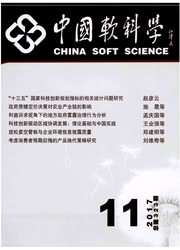

 中文摘要:
中文摘要:
以往研究不论是否支持"波特假说",但一个政策共识都是需要加大环境规制强度,以此促进技术创新。环境规制强度与技术创新真是线性关系吗?为此,首先利用我国1992-2009年的面板数据分别从全国与地区层面判断我国环境规制和技术创新的关系,进而利用非线性门槛面板模型实证研究我国环境规制和技术创新的"门槛效应"。研究表明:环境规制对技术创新的促进作用存在地区差异,"波特假说"在较落后的中西部地区难以支持,而在较发达的东部地区则得到了很好的支持。这种地区差异主要是受到环境规制强度及经济发展水平的影响。环境规制强度和技术创新之间呈现"U"型关系,只有环境规制强度跨越特定门槛值时,"波特假说"才能实现;经济发展水平则存在双重门槛,GDP跨越的门槛值越高,环境规制对技术创新的促进作用越显著。环境规制强度与经济发展水平的双门槛效应能对环境库兹涅茨曲线假说做出合理的解释。
 英文摘要:
英文摘要:
This paper uses panel data of China during 1992-2009 to analyze the relationship between environmental regulation and technological innovation form national and regional level respectively,and uses nonlinear threshold panel model to study "threshold effect" between environmental regulation and technological innovation.The result indicates that environmental regulation promoting role on technological innovation has regional differences.The more developed eastern support the Porter hypothesis but the more backward central is on the opposite.The result is mainly due to the environmental regulation intensity and economic development levels.Only the environmental regulation intensity cross a single threshold value,Porter hypothesis can be achieved,which means a U-type relationship between the environmental regulation intensity and technological innovation.There exist two economic development level thresholds.The higher the GDP is,the more significant role in promoting the technological innovation.Environmental regulation intensity and economic development level can made a reasonable explanation on the environment Kuznets curve hypothesis.
 同期刊论文项目
同期刊论文项目
 同项目期刊论文
同项目期刊论文
 期刊信息
期刊信息
